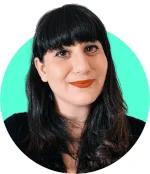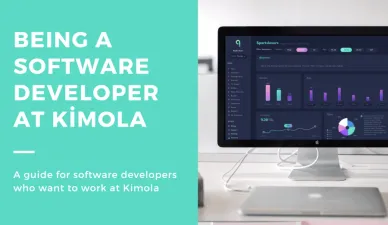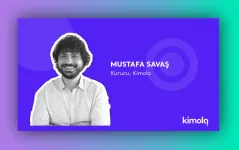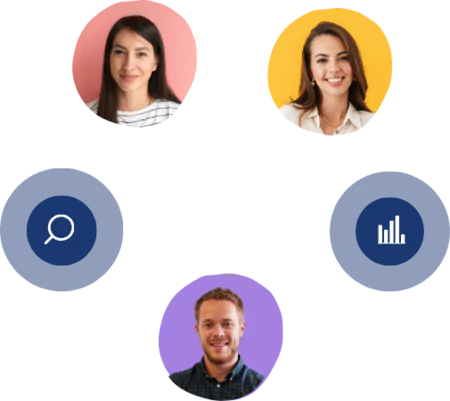Dataholic Talks #2: Ezgi from Match Group on Using Research Data for
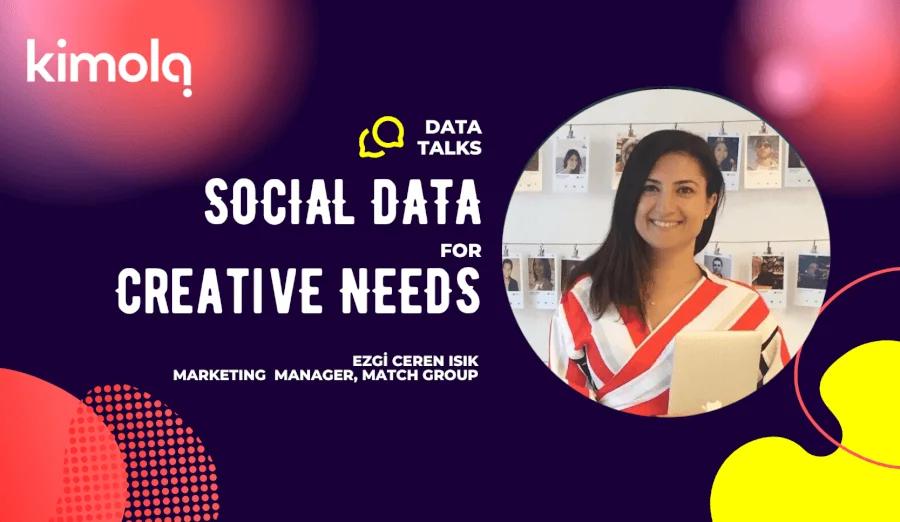
Tüketici içgörülerine odaklanan bir veri analizi şirketi olarak dünyanın her yerindeki pazarlama ve araştırma profesyonelleriyle konuşmayı seviyoruz. Bu serimizde " Veri Kullanımı ", " Araştırma Özeti Verme ", "Sosyal Araştırmanın Faydaları" gibi konularda değerli pazarlamacıların röportajlarını yayınlıyoruz . Son röportajımızı Match Group Pazarlama Müdürü Ezgi Ceren ile gerçekleştirdik. Match Group çoğunlukla Tinder, Okcupid ve Hawaya gibi uygulamalarıyla ünlüdür. Ezgi çeşitli flört uygulamalarında çalışmış ve aynı zamanda reklam ajanslarında da çalışmıştır. Yani marka pazarlamanın her iki yönünü de biliyor. Ayrıca Okcupid'in lansmanı için sosyal araştırmayı nasıl kullandığımızı da tartıştık. Daha fazla bilgi için aşağıdaki röportajımıza göz atın ve ilgileniyorsanız, tüketici içgörülerini ortaya çıkarmak için sosyal araştırmayı nasıl kullandığımızı burada görün !

Interview with Ezgi from Match Group
Merhaba Ezgi! Bize biraz kendinizden bahseder misiniz?
Elbette. Üniversitenin Fransızca Kamu Yönetimi bölümünden mezun olduktan sonra kariyerime 2008 yılında Inditex'te tekstil sektöründe başladım; 2010 yılında dijital sektöre geçtim. O tarihten bu yana uzun süredir bu sektörün içindeyim. 2015 yılından bu yana farklı flört uygulamalarının Türkiye'de kullanıma sunulmasından bu yana tüm iletişimlerini yönettim. 2016-2018 yılları arasında Tinder ekibindeydim. 2019 yılında Londra'ya taşındım ve küresel bir teknoloji firmasının uluslararası PR iletişimlerini yönettim. Daha sonra 2019 yılı sonunda Match Group'tan teklif alarak Türkiye'ye döndüm. O tarihten bu yana Match Group bünyesindeki uygulamaların Türkiye başta olmak üzere bazı markaların global pazarlardaki pazarlama faaliyetlerini yürütüyorum. Ajans tarafında proje yönetimi, marka yönetimi ve medya tarafında tecrübem var diyebiliriz.
OkCupid olarak şirketin yapısını araştırmaya daha yatkın hale getirdiğinizi biliyorum; Doğrudan tüketicilere sorup cevap alabileceğiniz, bunu PR bültenine dönüştürebileceğiniz bir sistem kurdunuz. Bence bu takdire şayan; çok gördüğümüz bir şey değil. Peki ne tür araştırmalar yapıyorsunuz? Motivasyonlarınızı ve tüketiciyi -özellikle dijital platformları- tanıma yöntemlerinizden bahseder misiniz?
OkCupid'de kullanıcılarımızı tanımak ve bu yanıtlara göre benzer tercihlere sahip kullanıcıları eşleştirmek için sorularımız var. Kullanıcılarımızın uygulama üzerinden kendilerine sorduğumuz sorulara verdikleri yanıtlardan, soğanlı veya soğansız çırpılmış yumurtayı sevip sevmedikleri, ne tür müzik dinledikleri, nerelere gitmeyi tercih ettikleri gibi bilgileri toplayabiliyoruz. Bunun dışında Match Group olarak her yıl düzenli olarak hem niteliksel hem de niceliksel araştırmalar yapıyoruz. Bu araştırmaları hem ülke bazında hem de karşılaştırmalı olarak bölgesel bazda yapabiliyoruz. Bu çalışmalar birçok ülkede aynı anda yürütülmektedir. Böylece markanın aktif kullanım oranı, marka algısı gibi farklı metriklerin yıllar içindeki değişimini kontrol edebiliyoruz. Bunların yanı sıra OkCupid olarak kullanıcı deneyimine özel A/B testleri de gerçekleştiriyoruz. Bu çözümler kendi geliştirdiğimiz çözümlerdir. Bunların dışında Kimola'nın yapmış olduğu çözümler de bulunmaktadır; Sosyal medyada neler konuşuluyor, henüz ulaşamadığımız potansiyel kullanıcılar neleri beğeniyor, onlara doğru mesajla ulaşıp ulaşamayacağımız sorularına yanıt arıyoruz.
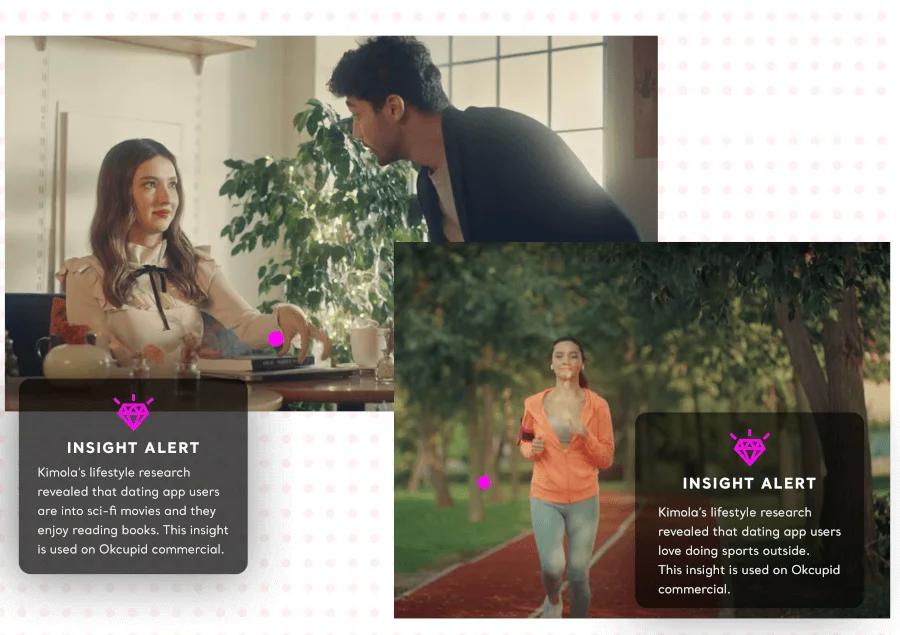
Kimola ile çalışmalarımıza ilk olarak sosyal araştırma ve yaşam tarzı analizi ile başladık: Kullanıcılarımızın nelerden hoşlandığı, diğer çevrimiçi flört ve flört uygulamalarını kullananların neden OkCupid kullanmadığı veya bu uygulamalarla ilgili engellerinin ve motivasyonlarının neler olduğu konusunda kapsamlı bir araştırma yaptık. . Bu araştırmayı kampanyamızdan hemen önce yaptık. Bu araştırmayı önceden yapmış olmamızın bize şu faydası oldu: Kampanyamızın yaratıcı kısmını bu araştırmaya göre şekillendirebildik. Mesela şu öngörülere ulaştık; Potansiyel kullanıcılarımızdan bazılarının müzik türlerinden çok dışarıda spor yapmayı, bisiklet kullanmayı, rock dinlemeyi sevdiğini öğrendik. Herkesin dijitale geçtiği varsayımı üzerinde düşünürken potansiyel kullanıcılarımızın daha fazlasını okumak istediğini öğrendik. Marka filmimizde öğrendiğimiz şu detayların altını çizdik; filmimizde ana karakterlerimizi ellerinde kitaplarla, sahilde bisiklet sürerken gördük. Mesela türler arasında bilim kurgunun ön plana çıktığını fark ettik. Reklamdaki kafe sahnesindeki kitap bir bilim kurgu kitabıydı. Biz de filmimizde bu kadar küçük detaylara yer verdik. Kimola sayesinde film sonrası tepkileri sosyal dinleme yöntemiyle de takip ettik ve güzel tepkiler aldık.
Use of Social Data Outside of Product Launches
Yıllardır bu işin içinde olan bir pazarlama profesyoneli olarak sosyal verilerin ürün lansmanı dışında nasıl kullanılabileceğini düşünüyorsunuz?
OkCupid'de birlikte çalıştığımız ajansların çoğunun ulaşmak istediği nokta aslında yerel veri ve içgörü sağlamak. Çünkü gazetecilere veriyle gittiğinizde o içerik daha haber değeri taşıyor. Bu araştırmaları yalnızca bu tür içgörüleri yakalamak için yapıyoruz; bunları basınla paylaşmıyoruz. Ancak bu tür araştırmaların ve sosyal dinlemelerin sonuçları zaman zaman sosyal medya içeriği ve basın iletişiminin bir parçası olarak kullanılabilir. Aktif iletişimde ve dijital iletişimin kendisinde kullanılabilir.
Peki sosyal araştırmalar için bize nasıl bir brifing verdiniz? Sosyal araştırma öncesinde bilgilendirme yapacak pazarlama profesyonellerine yol göstermek istiyorum.
Öncelikle markadan bahsettik. "Markanın bir kimliği var ama kullanıcıda nasıl bir yankı uyandırıyor?" Konuyu ölçmek için öncelikle markayı sizlere tanıttık. Bu aşamadan sonra bizim için başarının ne olduğunu, Türkiye'deki iletişimimizde neyi hedeflediğimizi, neyi başarmak istediğimizi konuştuk. Marka tarafında büyük resmi ortaya koymaya çalıştık. İletişim planımızı, kampanya planlarımızı ve zamanlamalarımızı konuştuk. Ardından 25-34 yaş aralığındaki kadınlardan oluşan, önceliklendirdiğimiz hedef kitlemizin bizim tarafımızdaki verilerden biraz bahsettik. Bu yaş aralığındaki ve cinsiyet odağındaki kişilerin nelerden hoşlandıklarını, hangi markaları takip ettiklerini ve bunlara ek olarak neler öğrenmek istediğimizi sizlere aktardık. Aslında kısa yöntemimizin ötesinde, iki saatlik bir sunumda tüm bunları konuştuk. Bundan önce sizden örnek bir brifing aldık; Ne tür şeyler beklediğinizi içeren kısa bir toplantı yaptık. Daha önce yaptığımız araştırmaları sektörel birikimimizle birleştirerek hedef kitlemizi ele aldık; Hangi kanalları kullandığımızı tartıştık. Bu toplantıdan iki üç hafta sonra taslak araştırma sunumundan ve hemen ardından da son sunumdan bahsettik.
Differences Between Traditional Methods and Social Research
Geleneksel yöntemlerle sosyal araştırma arasındaki farklar nelerdir?
Geleneksel tüketici araştırmalarında, "daha önce hiç çevrimiçi flört uygulaması kullanmamış" veya "çevrimiçi flört uygulamalarını daha önce kullanmış" ancak yine de ülkemizde ve dünyada uygulamalarımız sayesinde tanışıp evlenseler bile, insanlarla röportaj yapıyoruz. "arkadaşlarını" çağırın. Bazıları "Sizin sayenizde tanıştık" diyor. Dolayısıyla yüz yüze bir toplantıda bu sorularla karşılaşacaklarını bilmelerine rağmen bazı şeyleri açıkça paylaşmayabilirler, yüz yüze bir toplantıda yargılanacaklarını düşünebilirler ve normalde olduğundan çok daha farklı davranabilirler. yapın... Elbette geleneksel tüketici araştırmalarımıza her zaman devam edeceğiz ama bu şekilde geleneksel tüketici araştırmalarımıza da her zaman devam edeceğiz. Bu, geleneksel tüketici araştırmalarından elde edilen sonuçların, dikkate alınan hususlar doğrultusunda doğrulanması gibidir. Yani bu görüşmelerin çıktıları ile elimizdeki verilerin örtüşüp örtüşmediğini görmek de bizim için değerli.
Peki sosyal verilerde ne kadar ileri gidebiliriz? Buradan başka hangi alanlarda veri çıkarılabilir?
Mesela çok fazla influencer iletişimi yapıyoruz. Hedef kitlemizin ya da potansiyel hedef kitlemizin hangi influencerları takip ettiğini görebiliriz. Böylece hangi influencerlarla çalışabileceğimiz konusunda bize yol gösterebilir. Ayrıca hangi dergileri okuyorlar, hangi markalardan alışveriş yapıyorlar? Bu tür veriler, dijital pazarlama açısından bu marka işbirliği ve müşteri hedefleme aşaması için değerli bilgiler sağlar. Böyle faydaları var.
Suggestions
Ayrıca daha genel bir kariyer sorusu sormak istiyorum. Verilerden faydalanmak ve strateji geliştirmek isteyen marka yöneticilerine önerileriniz var mı?
Elbette. Kimola olarak sunumunuzdan sonra size şu geri bildirimi verdiğimi hatırlayın: Sunumunuz "veri sıkıcı bir şeydir" ifadesinin ötesine geçen eğlenceli bir sunumdu. Yani "aptallar için analiz" gibiydi. O kadar güzel resimlendirilmiş, o kadar güzel sunulmuş bir sunumdu ki sanki çizgi roman okuyormuşçasına “Acaba bundan sonra ne olacak” heyecanıyla dinledim. Dolayısıyla bu kadar çabuk anlaşılabilecek bir rapor ve sunumun olması faydalı oldu. Nereden başlasınlar diye sorarsanız sizden rapor almaları gerekir derim :) (Gülüyor) Onun dışında; Match Group, yıllar içinde kurulmuş yapısına entegre edilmiş, iyi öğrenilmiş bir araştırma yöntemine sahiptir. Sürekli aynı soruları sorarak yıllar geçtikçe değişimi görüyoruz - tabi ki yeni sorular ekleniyor veya kaldırılıyor, yeni rakipler ekleniyor, bazı markaların rakiplerinden öne çıktığını görüyoruz, bir anda konuşulduğunu görüyoruz. hakkında; yeni oyuncular giriyor çıkıyor… Ama örneğin hem gönüllülere hem de gönüllü olmayanlara uygulamanın gizlilik ve güvenlik politikalarına ilişkin uygulama soruları hakkında olumlu ya da olumsuz düşüncelerini soruyoruz. Böylece hem yeni vizyonları hem de yıllar içinde değişen ve gelişen düşünce biçimlerini takip edebiliyoruz. Match Group'ta çalışmanın böyle bir avantajı var.

